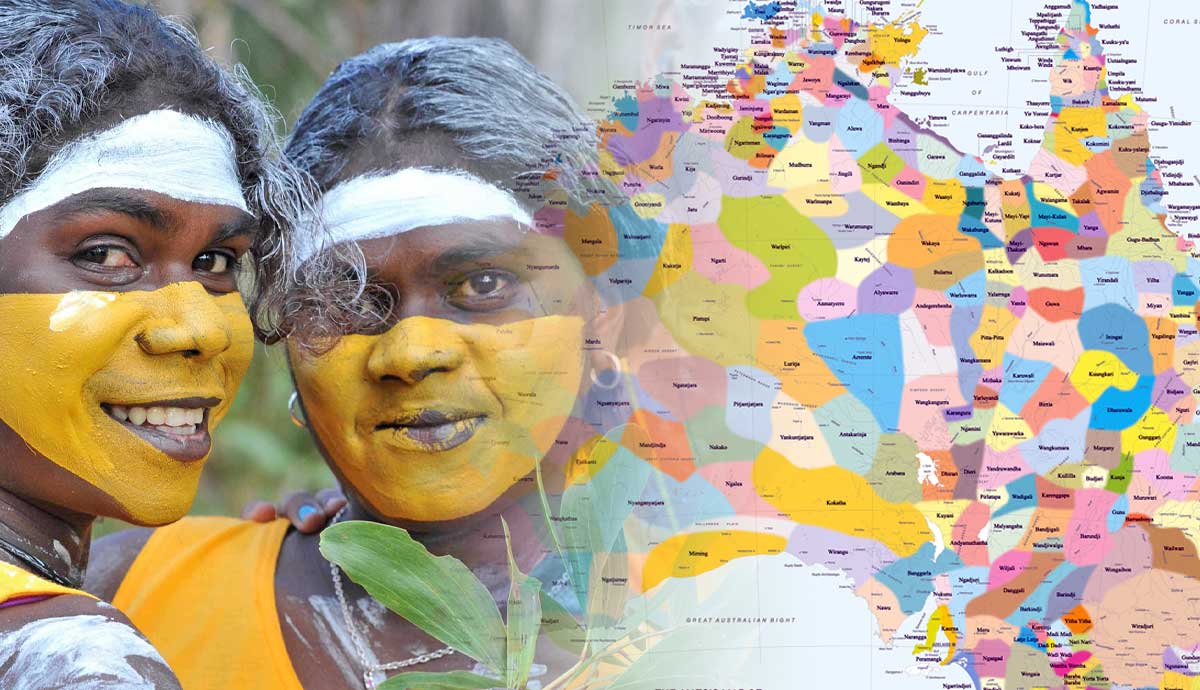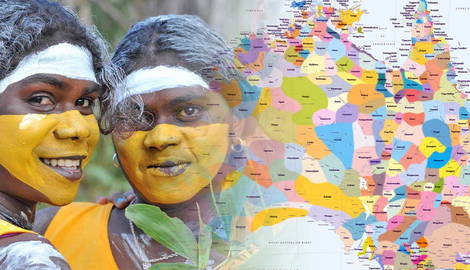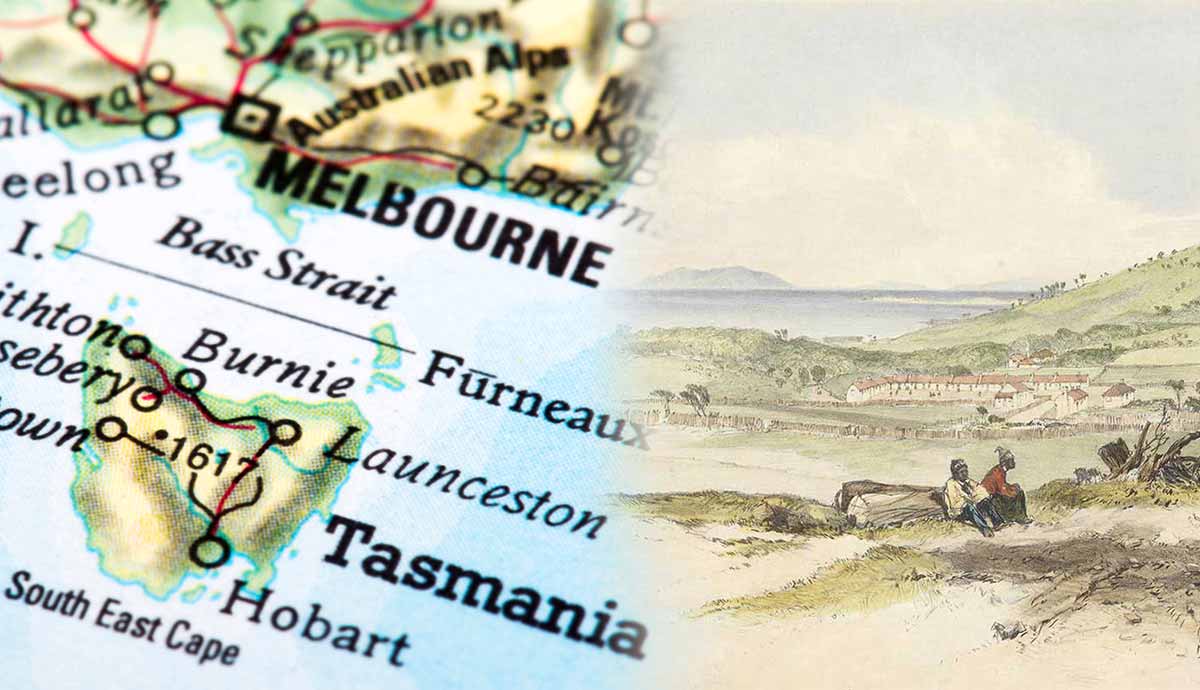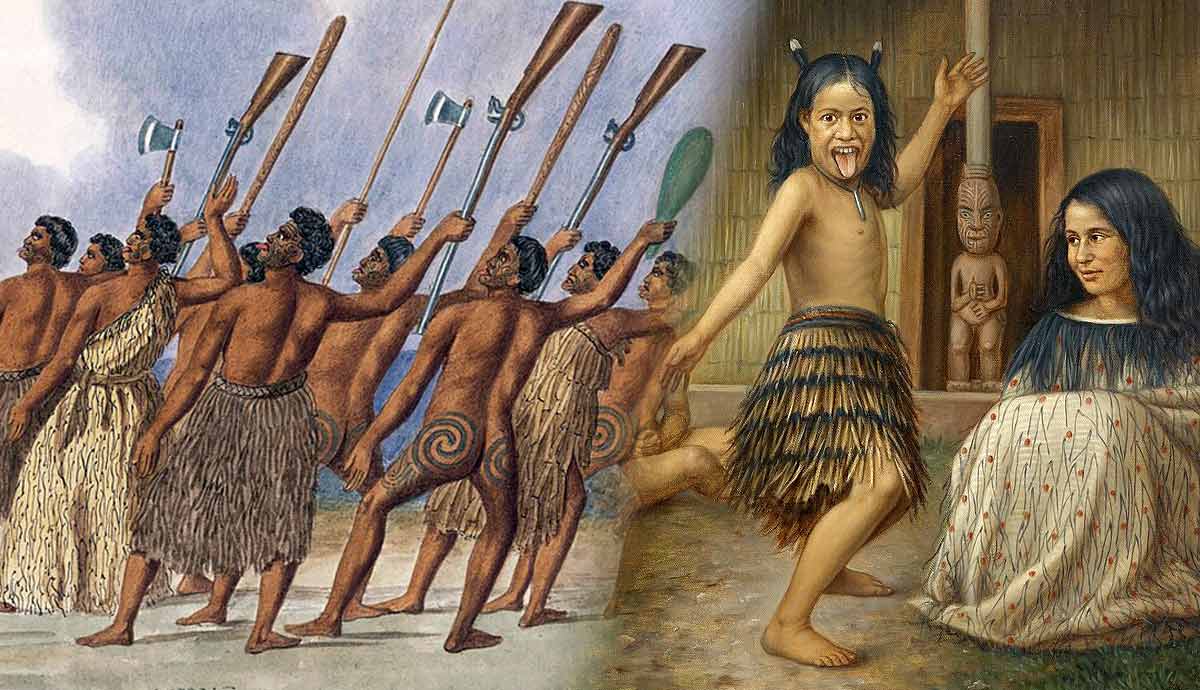
The colonial history of Australia is a small chunk of time in the history of the Aboriginal and Torres Strait Islander people. European settlement brought many changes to their lives, some of them irreversible. In many cases, the colonial attack on Aboriginal bodies was also an attack on their culture and on aboriginal languages. Before 1788, different Aboriginal tribes spoke at least 300 languages (some believe the number goes up to 700). Some were extremely different from each other, as shown by the dissimilarities between the so-called Pama-Nyungan (PN) and non-Pama-Nyungan languages. Today many Aboriginal Australians are active speakers of Aboriginal English, a colonial product originating from the contact between English and Indigenous languages.
Aboriginal Languages: Pama-Nyungan (PN) and non-Pama-Nyungan (PN)

For Indigenous communities across what is now Australia, language is a vehicle of culture, identity, allegiance, tribal unity, and belonging. It represents a millennia-long relationship to a specific tribal territory.
Indigenous languages are also a vehicle for history, as linguists believe that relatively small differences among two or more Aboriginal languages are often due to tribal splits or mergers that occurred at some point in the past. Tribal names often derive from the name of a language. In certain parts of Australia, for instance, even among those languages conventionally called dialects, the smallest differences are extremely meaningful because they point to the tribal specificity of their speakers. In this framework, the colonial attack on Indigenous languages represents an attack on the very core of Indigenous identity.

At the end of the 18th century, when the first settlers and explorers crossed the Blue Mountains, Aboriginal and Torres Strait Islanders spoke between 300 and 700 distinct languages. The exact number is unknown for obvious reasons, but we owe much of what we know to Norman Tindale (1990-1993), an Australian anthropologist from Perth who spent years mapping the various Aboriginal groups and the languages they spoke across the continent.
Between 160 and 250 of these languages are still spoken today, despite numerous 20th-century government policies that prevented children in missions from speaking the language of their parents and ancestors. According to AIATSIS, in the Torres Strait alone, Indigenous people speak three main languages: Kala Lagaw Ya, Meriam Mir, and Yumplatok (or Torres Strait Creole). They have various dialects, are as varied as European languages can be, and are as different from each other as Italian, French, Hindi, Arabic, and Bengali.
Despite their many differences, as well as the influences from the Macassan and Dravidian languages of southern India, Indigenous languages in Australia can all be traced back to a common source, an ancestral Aboriginal language called proto-Australian. Today linguists differentiate between Pama-Nyungan (PN) languages and non-Pama-Nyungan languages.
Non-Pama-Nyungan languages were (and are) spoken mainly in the northern regions of Australia, in the Top End and the Kimberley, the areas that remained untouched by the spreading of proto-Australian. They use prefixes that give rise to long compound words and tend to have more elaborate verbal structures.
The Pama-Nyungan languages, on the contrary, were spoken in the lands where Melbourne, Canberra, Perth, and Brisbane were built. They essentially cover most of the continent. Grammatically, they are characterized by the use of suffixes to indicate grammatical functions. Over the centuries, they have changed as people moved across the continent, crossing deserts, or following waterways or coastlines.
What Is Aboriginal English?

The language that linguists call Aboriginal English is a product of Australia’s history of colonization. Aboriginal English (and its many varieties) originated upon contact with Europeans in the late 18th century. However, it can by no means be described as a simplified or random deviation from an expected norm.
For many Aboriginal people today, it is in effect a mother tongue, as well as an expression of Aboriginal identity. It is a distinct language whose phonology, terminology, and grammatical structures reflect the patterns and constraints of both Australian Aboriginal languages and Standard Australian English.

This is evident in the following extract from Taboo (2017), a novel written by Noongar writer and scholar Kim Scott, and a must-read for anyone interested in contemporary Australia and Aboriginal culture. Here, two characters, Gerald and Gerrard, discuss their encounter with Tilly, a girl of mixed descent, long estranged from the community of her Aboriginal father, Jim.
“Boy still on holiday?”
“Do him good in a way”
A prison was named.
“Yeah. They still doing those classes, Jim was showing them?”
“Dunno”
“Jim was teaching them?”
[…] “What we doing today?”
“Stuff.”
“Better get everybody up”
“He up, himself?”
“Oh yeah, he up himself alright”
“Ha. I mean awake, out of bed.”
“Well, this one is.”
“She Jim’s girl?”
“Yeah”
“She know about her mum and dad?”
“Just met her dad. Only ever known him inside”
“Shame” (Taboo, 123-4)

In this short dialogue, we find many distinctive features and non-standard patterns of Aboriginal English. In Aboriginal English, connecting verbs (to be in this case) tend to be omitted. This occurs in the present tense and continuous-aspect forms, such as in “He up, himself?” and “What we doing today?” They are never omitted in the past form (as in “They still doing those classes, Jim was showing them?”) or the meaning would not be clear.
Aboriginal English is, in fact, a rational language with its own set of rational rules. Its features are never arbitrary. Questions of the yes/no type are formed simply by adding a question mark at the end (“Jim was teaching them?”; “She Jim’s girl?”). If the question mark had been omitted, the sentence would have functioned as an affirmative clause and would have been identical to a statement.
This feature, namely the construction of interrogative clauses as statements, is one of the most persistent grammatical features of Aboriginal English, as its speakers commonly ask questions using the structure of an affirmative clause with a rising intonation (signaled in literary texts by the question mark at the end). Linguists believe it originates from the Aboriginal customs of resorting to a range of indirect means to obtain information.
In addition, Aboriginal English contains many vocabulary items and terminology not commonly found in Standard Australian English. Despite some local differences, they are unique to Aboriginal English speakers.

The novel Taboo abounds with Aboriginal English terms. The most common is lingo, which means “Aboriginal language” (“You reckon that’s our lingo?”). Readers will also find wadjela, indicating “a white man” and the term mob, which translates to “group” (“You’re that Wirlomin mob”).
The Western Australian question-tag “unna” is also very common. It is used as “inna” in South Australia, and “eh?” in much of the country (“We’re on time so far, Wally, but for how long, unna?”).
Although typical of Aboriginal English, mob is also used today by non-Aboriginal English speakers: indeed, big mob is often used as a substitute for much, many, a lot, especially in the Kimberley region of far northern Western Australia. Furthermore, in some Australian languages words cannot end with stop consonants, that is, /p/, /t/, /k/, /b/, /d/, and /g/: to conform to this pattern, in Aboriginal English English words will have their final sound dropped or another letter added (“Musta been bushfire not far”).
Language Switching

Language switching, that is, changing register according to the social situation one is in, is a common practice among Aboriginal people. In many Aboriginal languages special “respect” speech varieties are required when the speaker is addressing someone who stands in the kinship relation of a potential mother-, son-, or father-in-law. Similarly, a speech variety with distinct phonetical and grammar rules is employed when talking to children under a certain age.
Honoring and respecting registers is crucial to maintaining peaceful relations, to the point that in a creative context such as that of storytelling, failure to respect such registers is often used to create irony and misunderstandings. Linguistic switching is particularly important when considered in the context of the Australian judiciary system. For a long time in Australia, Aboriginal evidence was not allowed in court.

Aboriginal voices were silenced and events were twisted and wrapped in euphemism by white men in newspaper reports and official documents. The use of language in courts, as Michael Christie notes in his interesting essay The Language of Oppression, was particularly important, since Aboriginal actions were “usually termed ‘attacks, incursions, atrocities, outrages, crimes, murders, or depredations,’” whereas the activities of the squatters and border police are referred to as “‘incidents, clearing operations, self-defense, punitive expeditions or police actions.’”
While retaining their unique language, the Aboriginal characters in Taboo are aware of the importance of using a mutually understandable language in particularly important situations where no room can be left for misunderstandings. Language not only serves the purpose of communication, but it also maintains a kind of separateness in language use that allows for privacy and reinforces a sense of separate identity. The endless subtleties of Aboriginal English are often invisible to non-Indigenous speakers.
Dormant Languages?

For many Aboriginal and Torres Strait Islanders, English has been (and sometimes still is) the language of oppression. Because of its strong connection with the bodies of its speakers, language is also a fragile tool, always hovering between life and death, between survival and forgetfulness. Today, reconciliation with non-Indigenous Australians and community survival also depend on language retention and the possibility of language revitalization.
Many of the Aboriginal languages spoken before 1788 are now extinct. Nonetheless, some of them are experiencing a renaissance. Arrernte in the Red Centre or the Yolŋgu language of Arnhem Land are regularly spoken by both young and old. AIATSIS reports that “in Port Headland, Western Australia, the Wangka Maya Pilbara Aboriginal Language Centre preserves, promotes, and maintains around 31 Aboriginal languages across the Pilbara. Today it holds a unique and diverse cultural collection including 5000 recordings of Pilbara languages in its archives.”
In a country with a history of colonialism, “the oppression of the Aborigines began with words,” as Michael Christie notes. It is with words and languages that Indigenous peoples around the world are finally able to reclaim the value of their cultures, the importance of their ancestral languages, and their place in society.










